SILVANA MOSSANO
Reportage udienza 11 luglio 2022
Il professor Gary Marsh, americano, docente all’università di Pittsburgh e presente a Novara lunedì 11 luglio al processo Eternit Bis in qualità di consulente della difesa, come esperto in biostatistica ed epidemiologia, ha contestato su tutta la linea le relazioni degli esperti del pubblico ministero Corrado Magnani e Dario Mirabelli, epidemiologi italiani, autori di qualche decina di studi scientifici sull’esposizione all’amianto, una buona parte dei quali specifici sul caso di Casale Monferrato.
E’ sul «caso Casale» che, appunto, è incentrato il processo Eternit Bis, davanti alla Corte d’Assise di Novara chiamata a giudicare l’imprenditore svizzero Stephan Schmidheiny per l’omicidio volontario (con dolo eventuale) di 392 persone, ex lavoratori alla Eternit di Casale o semplicemente residenti in città, morti di mesotelioma. Il cancro maligno dell’amianto.
LE COMPETENZE DEL CONSULENTE
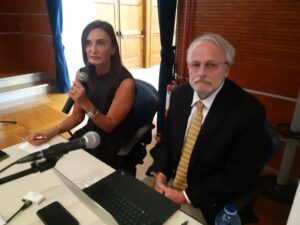
Ovviamente il professor Marsh, come è giusto per saggiare l’autorevolezza dell’esperto, si è presentato elencando, tra i molti incarichi, quello di professore all’università di Pittsburgh (e, dal 2020, in quell’Ateneo professore emerito di biostatistica ed epidemiologia), di membro della Società americana di epidemiologia, di direttore del Centro di biostatistica ed epidemiologia occupazionale, di coordinatore scientifico principale, a tutt’oggi, della società Cardno ChemRisk. «E’ una società a scopo di lucro?» si è informato il pm Gianfranco Colace. «Yes», Marsh ha iniziato a lavorarci un giorno alla settimana quando era ancora professore a tempo pieno a Pittsburgh, poi ha diviso il proprio tempo professionale a metà, tra università e Cardno ChemRisk.
«E chi sono i committenti della Carno ChemRisk?». Marsh: «Di solito vengo contattato da avvocati che mi conoscono come epidemiologo». «Sì, ma per conto di chi lavorano questi avvocati? Per aziende, per compagnie private?». «Yes».
Il processo Eternit, ha spiegato il professore, è l’unico di cui si è occupato per un’azienda produttrice di manufatti d’amianto e che lo ha portato due volte fuori dagli Stati Uniti: a gennaio 2011 per il «Maxiprocesso 1» a Torino e ora, a Novara, per il «Bis».
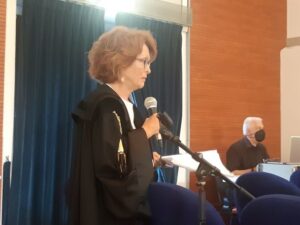
Nella sua carriera si è poi impegnato su altri fronti. Gliene ha chiesto conto l’avvocato di parte civile Laura D’Amico: «Ha seguito in America cause civili intentate da donne o loro famigliari, morte per l’uso di talco contaminato da amianto?». Marsh: «Sì, talco usato in cosmetica». «E lei, professore, ha lavorato per conto delle aziende?». Marsh: «Sì, per i produttori o per chi commercializzava prodotti cosmetici con talco». «E si è impegnato anche in consulenze relativamente a prodotti chimici, come il glifosato usato in un pesticida prodotto dalla multinazionale “Monsanto”? (la società, dal 2016 di proprietà della Bayer, è stata condannata a pagare milioni di dollari in risarcimenti, ndr)». «Yes». «Ok, ha lavorato per la Monsanto. E anche per l’American Chemistry Council delle industrie chimiche? E per l’associazione di aziende del Nord America che opera nel settore dell’isolamento?». «Yes, e – ha aggiunto il consulente – per grosse aziende produttrici di farmaci, ma anche per conto di fondazioni e agenzie federali e governative». E ha citato altresì alcune pubblicazioni di cui è stato autore, «sottoposte a valutazione scientifica internazionale», tra cui «un lavoro del 2003 su asbesto e fibra di vetro».
L’esame e il controesame del professor Marsh ha richiesto un tempo piuttosto lungo, sia per esporre le sue considerazioni (non ha condotto uno studio proprio, ma ha analizzato i lavori condotti e già illustrati dai consulenti del pm) sia perché è stato necessario tradurre, passo passo, la sua relazione. Compito non facile, trattandosi di argomentazioni tecniche. Per l’incarico, è stata convocata non un’interprete professionista, ma una docente di Oncologia all’Università del Piemonte Orientale, la professoressa Alessandra Gennari, primario di Oncologia a Novara.
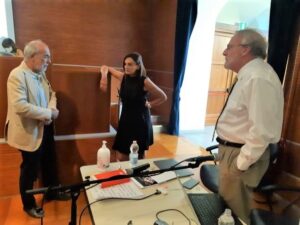
Dunque, fatta la presentazione, il professor Marsh ha «sottoposto a revisione critica» tutte le tesi e, in alcuni casi, anche il metodo di lavoro dei consulenti della procura Magnani e Mirabelli.
«L’ESPOSIZIONE CUMULATIVA NON CONTA»
Il consulente della difesa ha citato 3 studi di Magnani e Mirabelli che evidenziano la correlazione tra «esposizione cumulativa» alla fibra di amianto e l’«aumento del rischio di sviluppare il mesotelioma pleurico» (cioè più fibra di amianto si respira complessivamente e più cresce il rischio di ammalarsi di tumore). Gli studi a sostegno di questa tesi sono molti più dei 3 citati dal professore americano; i consulenti della procura ne hanno prodotti alla Corte oltre una ventina che Marsh non ha considerato (o non ne ha fatto oggetto di riferimento) perché è comunque contrario alla tesi della dose cumulativa. A suo parere, «ciò che conta è il tempo dalla prima esposizione (o prime esposizioni) alla fibra». E’ in quel momento, secondo il suo convincimento, che si colloca l’esordio delle mutazioni cellulari che determinano, successivamente, la formazione tumorale. Tutte le esposizioni successive, secondo Marsh, non contano più, sono ininfluenti.
«CONTA LA PRIMA ESPOSIZIONE»
La tesi sulla validità del «tempo dalla prima esposizione», su cui il professore ha insistito opponendola tenacemente a quella della «esposizione cumulativa», è stata poi trasferita al contesto reale. Su questo terreno concreto ha chiesto lumi il pubblico ministero Gianfranco Colace, per verificare la teoria esposta da Marsh con le effettive modalità di contaminazione cui sono stati sottoposti gli abitanti di Casale, dove lo stabilimento Eternit, più antico e più grande d’Italia, ha operato dal 1907 al 1986.
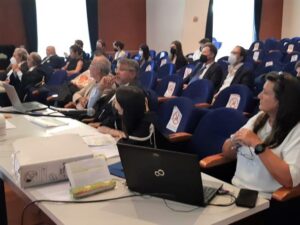
CASO LAVORATORE DELL’ETERNIT
Ha domandato il pm: «Quando avviene, secondo lei, la prima esposizione per un lavoratore dell’Eternit?». Marsh: «L’esposizione inizia dal primo giorno di lavoro nella fabbrica». Non importa, cioè, se poi ci lavora altri vent’anni.
CASO RESIDENTE A CASALE
Domanda successiva: «E qual è la prima esposizione per un residente, non lavoratore all’Eternit?». Marsh: «In questo caso bisogna conoscere il suo luogo di residenza e verificare se c’erano, nelle vicinanze, delle “localizzazioni comunitarie”». E’ l’espressione con cui il consulente ha definito i siti (in numero di 1878, rilevati dall’Arpa nel territorio del Casalese) nei quali è stata trovata presenza di fibra di amianto derivante dai cosiddetti «usi impropri»: polverino come coibente dei sottotetti, o come rafforzante e livellante di cortili e campi da gioco, rottami come battuto di strade o piazze, feltri, tettoie di pollai o delimitazioni di aiuole, o gli stessi tetti di lastre piane o ondulate, magari ammalorati col tempo, posati su edifici, capannoni, garage.
Marsh ha focalizzato l’attenzione sulla diffusione di fibre derivante da queste fonti, mentre ha sorvolato sulla diffusione di fibre dalla fabbrica al Ronzone, posta a poco più di un chilometro dal centro storico della città. E ha piuttosto criticato i consulenti Magnani e Mirabelli che, secondo lui, hanno dedicato una quasi esclusiva attenzione allo stabilimento quale fonte primaria di diffusione dell’amianto.
Invece «questi utilizzi di rifiuti di lavorazione usati dalla comunità in area urbana – ha ribadito a più riprese – sono sorgenti di diffusione delle fibre nell’aria, decisive sul rischio di ammalarsi di mesotelioma».
Tornando alla domanda del pubblico ministero: per un residente non lavoratore Eternit qual è dunque da considerarsi la prima esposizione? Marsh: «Tra le varie abitazioni dove ha vissuto, bisogna vedere qual è la prima in cui, dentro o nelle vicinanze, c’era una di queste installazioni improprie. Ed è lì – ha spiegato irremovibile il consulente della difesa – che si colloca la prima esposizione».
«E se uno ci nasce in quella casa? E’ contaminato dalla nascita?» ha domandato Colace.
Viene, qui, da fare una considerazione: visto che la latenza convenzionale del mesotelioma si aggira, mediamente, tra i 30 e i 50 anni, in base alla convinzione di Marsh a Casale dovrebbe esserci un numero elevato di morti trentenni, quarantenni, cinquantenni. Contaminati e consegnati fin dai primi giorni di vita a un destino ineluttabile, per colpa di un papà che ha fatto coibentare un tetto col polverino oppure per il battuto del cortile del vicino di casa! Ma c’è da crederci?
CASO RESIDENTE E LAVORATORE ETERNIT
Terzo caso preso in esame: per un lavoratore Eternit che è anche residente a Casale, quale è da considerare la prima esposizione? Secondo Marsh, il punto di partenza è sempre lo stesso: bisogna vedere dove ha abitato; se a casa sua o nei dintorni c’era presenza di fibra d’amianto, la prima esposizione significativa è quella; poco conta se ha lavorato, poi, 5, 10 o più anni all’Eternit, magari nel reparto tubi.
Il professore americano, in ogni situazione prospettata, ha fortemente insistito su questa tesi e ha respinto quella della esposizione cumulativa.
LA STRATEGIA DEL DUBBIO
Di fatto non sorprende, perché le argomentazioni del professore sono in linea con la strategia difensiva, peraltro legittima, di instillare nei giudici il dubbio: se ciò che vale è il tempo della prima esposizione, e se la latenza generale oscilla mediamente tra i 30 e i 50 anni, le esposizioni dei 392 casalesi indicati nel capo di imputazione sarebbero avvenute prima del 1976, anno in cui l’imputato ha assunto ufficialmente la gestione dell’Eternit fino al 1986. E’ il decennio che interessa ai fini del processo. Perciò, se conta la prima esposizione e quelle successive no, le responsabilità riguardano, al più, i gestori o amministratori che c’erano prima a capo della società (e che sono già morti).
UOMINI E DONNE
I conti, però, non tornano del tutto. I pm Colace domanda: «Se prevale su tutto il tempo dalla prima esposizione, come mai ci sono incidenze di morti così diverse tra uomini e donne? Il tempo dalla prima esposizione agisce in modo diverso a seconda che si tratti di maschio o femmina?». Marsh: «E’ possibile che le donne abbiano avuto l’esposizione più vicina alla propria residenza e, in più, anche quella dovuta al fatto che il marito tornava a casa con la tuta sporca di amianto e lei lo aiutava a spogliarsi…». Qui, però, emerge una contraddizione che Colace fa notare: se conta la prima esposizione, non dovrebbe influire il fatto che il marito torna a casa quotidianamente con la tuta sporca. Non sono forse dosi aggiuntive (e quindi inefficaci, secondo Marsh) quelle della tuta impolverata d’amianto, giorno dopo giorno in modo continuativo?
E’ stato poi chiesto al consulente americano se fosse a conoscenza dell’area di frantumazione degli scarti di manufatti provenienti da tutti gli stabilimenti Eternit italiani, lavoro che veniva fatto soltanto a Casale. «Sì, – ha ammesso – ricordo di averlo sentito anni fa, ma non ne ho più sentito parlare recentemente. Sicuramente c’era questo sito, e parte del prodotto di frantumazione veniva portato a casa dai cittadini…». Colace stoppa: «No, non era così; se questa è la sua risposta, glielo dico io che, no, non era così. Quei rottami venivano frantumati, a cielo aperto, con una ruspa, e il materiale sminuzzato non era destinato agli usi impropri della popolazione, ma veniva fatto rientrare nel ciclo produttivo, mescolato alle materie prime nel mulino Hazemag». Con tante fibre nell’aria, ventiquattro ore su ventiquattro, ancora nel decennio 1976-1986.
Ma il professor Marsh, ovviamente, non conosce Casale, «non ci sono mai stato, ho visto qualche fotografia».
«COLPA DEGLI USI IMPROPRI»
Parla invece di località in Luisiana e in Polonia, citando gli autori e i risultati di alcuni studi riguardanti la diffusione di «installazioni domestiche» di scarti di manufatti di amianto. Su questo convinimento insiste.
Invero, noi non sappiamo come fossero strutturate queste località, ma di Casale sappiamo che c’era lo stabilimento a poco più di mille metri dal Duomo, e l’area di frantumazione su strada tra le abitazioni civili (ancor più vicina al centro storico), e il viavai costante di camion scoperti per le vie cittadine, tra le case, per trasportare sacchi di amianto (materia prima dell’Eternit) o manufatti finiti (tubi e lastre) ai magazzini in piazza d’Armi o alla stazione ferroviaria. Anche nel decennio 1976-1986.
Ora, a Casale non si sono mai sottovalutate le esposizioni ambientali ai già citati «usi impropri», anzi sono state avviate massicce campagne di bonifica e di sensibilizzazione anche su questo fronte, ma, come ebbe a dire un consulente delle parti civili, Gino Barbieri, il 17 gennaio scorso, «quello delle coperture (e degli usi impropri) è un pericolo, non un rischio». Ossia: la condizione di pericolo implica la potenzialità intrinseca di causare un danno, mentre il rischio è la stima della probabilità che il danno si verifichi. Quindi: è indispensabile bonificare questi siti (in condizioni di sicurezza) perché, in determinate condizioni, possono diventare un rischio, ma viene un po’ difficile convincersi che sia stato più pericoloso aver vissuto vicino alla tettoia d’amianto di un pollaio che aver lavorato 10 anni all’Eternit o aver respirato ripetutamente le fibre che circolavano in libertà dentro e fuori dallo stabilimento, dentro e fuori dall’area di frantumazione, dentro e fuori dai magazzini, lungo le vie, attorno alla stazione.
La valutazione sulle tesi contrapposte, proposte dagli esperti della procura e della difesa, spetterà ai giudici.
PROSSIME UDIENZE A NOVARA
La prossima data è lunedì 18 luglio, per il controesame di due consulenti di difesa già escussi: l’anatomopatologo Massimo Roncalli, professore straordinario all’Irccs Humanitas di Milano e Andrea D’Anna, professore ordinario di Impianti Chimici all’Università di Napoli Federico II.
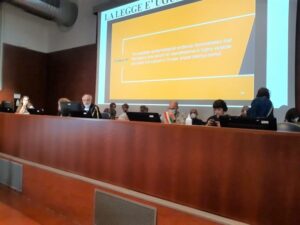
Il presidente della Corte d’Assise, Gianfranco Pezone, ha poi indicato la data di mercoledì 21 settembre e una di ottobre (ancora da precisare) per completare le consulenze della difesa. Sono previste altre due udienze a novembre e altrettante a dicembre, per requisitorie e arringhe delle parti civili. E’ probabile che le arringhe della difesa si fissino dopo Natale.
CORTE APPELLO DI TORINO
E’ stata rinviata dal 14 luglio al 29 novembre la pronuncia della sentenza da parte della Corte d’Appello di Torino che ha giudicato, in secondo grado, l’imputato Stephan Schmidheiny nel filone del processo Eternit Bis riguardante due morti di Cavagnolo. Il pg della procura generale Carlo Maria Pellicano ha chiesto la conferma della condanna di primo grado a 4 anni per omicidio colposo. I difensori Astolfo Di Amato e Guido Carlo Alleva hanno insistito per l’assoluzione. La Corte di Torino è presieduta da Flavia Nasi, affiancata da Maria Alvau e Ivana Pane.
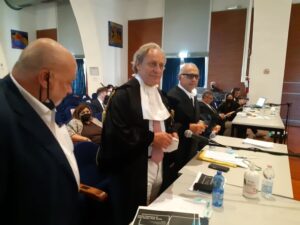
MOTIVI SENTENZA A NAPOLI
Sono uscite in questi giorni le motivazioni della sentenza emessa dalla Corte d’Assise di Napoli (presidente Concetta Cristiano e giudice a latere Maurizio Conte) nei confronti dell’imprenditore svizzero, nel filone dell’Eternit Bis per 8 morti di Bagnoli. La Corte ha derubricato il reato da doloso con dolo eventuale a colposo con colpa cosciente; di conseguenza, sei casi sono stati prescritti; per un caso c’è stata l’assoluzione e per un altro la condanna dell’imputato a 3 anni e 6 mesi di reclusione. I pm Anna Frasca e Giuliana Giuliano avevano chiesto che fosse riconosciuta la responsabilità di Schmidheiny per omicidio con dolo eventuale e fosse inflitta la pena di 23 anni e 11 mesi.
* * *
TRANSLATION by VICTORIA FRANZINETTI
U.S. fiber spread expert: misuse of asbestos in city is more responsible for diseases than the Eternit plant
by Silvana Mossano
Professor Gary Marsh, an American, professor at the University of Pittsburgh and in Novara on Monday, July the 11th 2022, at the Eternit Bis trial as an expert witness for the defense, is an expert in biostatistics and epidemiology. He challenged the reports by the PP’s (Public Prosecutor’s) experts Prof Corrado Magnani and Dr Dario Mirabelli, Italian epidemiologists, authors of dozens scientific studies on asbestos exposure, most of which specifically on the Casale Monferrato cases.
The Eternit Bis trial is being heard before the Novara Assize Court called to judge Swiss businessman Stephan Schmidheiny for the (possibly willful) murder of 392 people, former workers at Eternit in Casale or simply residents of the town. They all died of mesothelioma, a cancer caused by asbestos, and the case is centered on Casale.
THE EXPERT WITNESS’S TESTIMONY
As is only fair, to assert himself as an expert witness, Prof Marsh introduced himself by listing some of his many positions, professor at the University of Pittsburgh till 2020 (and now Emeritus of biostatistics and epidemiology at that University), member of the American Society of Epidemiology, director of the Center for Occupational Biostatistics and Epidemiology, and principal scientific coordinator, to date, of the Cardno ChemRisk Society. “Is it a for-profit company?” inquired Prosecutor Gianfranco Colace. “Yes.” Marsh started working there one day a week when he was still a full-time professor at Pittsburgh, then split his professional time in half between the university and the Cardno ChemRisk Company.
“And who are Carno ChemRisk’s customers?” Marsh: “I’m usually approached by lawyers who know me as an epidemiologist.” “Yes, but who do these lawyers work for? For corporations, private companies?” “Yes.”
The Eternit trial, the professor explained, is the only one he has handled for an asbestos-manufacturing company and which has taken him twice outside the United States: in January 2011 for “Maxiprocesso 1” in Turin and now, in Novara, for “Bis.”
In his career he has since engaged on other fronts. He was asked about this by Casale community’s attorney Laura D’Amico: “Have you handled civil cases in America brought by women or their families who died from the use of talcum powder contaminated with asbestos?” Marsh: “Yes, talcum powder used in cosmetics.” “And you, professor, have you worked on behalf of companies?” Marsh: “Yes, for manufacturers or those who marketed cosmetic products with talc.” “And did you also engage in consulting with regard to chemicals, such as glyphosate used in a pesticide produced by the multinational corporation “Monsanto”? (the company, since 2016 owned by Bayer, has been ordered to pay millions of dollars in compensation, ed.). “Yes.” Okay, he worked for Monsanto. “And also for the American Chemistry Council of Chemical Industries? And for the North American Association of Insulation Companies?” “Yes, and,” the consultant added, “for large drug companies, but also on behalf of foundations and federal and government agencies. And he also cited a number of publications he has authored that have “undergone international scientific review,” including “a 2003 paper on asbestos and fiberglass.”
Professor Marsh’s examination and cross-examination took quite a long time, both for him to comment as he did not conduct his own study, but analyzed the work conducted and already explained by the PP’s expert witnesses, and because it was necessary to translate him step by step. Not an easy task, dealing with technical arguments. For the assignment, a non professional interpreter was called in, a professor of Oncology of the University of Eastern Piedmont, Professor Alessandra Gennari, head of Oncology in Novara.
So, having made the presentation, Professor Marsh critically reviewed all the theses and, in some cases, even the working method of Prof Magnani and Dr Mirabelli.
CUMULATIVE EXPOSURE DOES NOT EXIST
Defense counsel cited 3 studies by Magnani and Mirabelli showing the correlation between “cumulative exposure” to asbestos fibers and the increased risk of developing pleural mesothelioma (i.e., the more asbestos fiber one breathes in overall, the greater the risk of getting cancer). The studies supporting this thesis are many more than the 3 listed by the U.S. professor; the PP’s consultants produced more than 20 studies that Prof Marsh had failed to consider (or had not referred to) because he disagrees with the cumulative dose thesis. In his view, “what matters is the time from the first exposure(s) to the fiber.” It is at that time, he states, that the onset of the cellular mutations that subsequently lead to tumor formation take place. All subsequent exposures, according to Marsh, no longer count; they are irrelevant.
ONLY THE FIRST EXPOSURE COUNTS
The argument about the validity of “time from first exposure,” on which the professor insisted by tenaciously opposing it to that of “cumulative exposure,” was then transferred to the real-world context. PP Dr Gianfranco Colace asked for clarifications, to verify the theory set forth by Prof Marsh with the actual patterns of contamination which the Casale residents were exposed to. The town had Italy’s oldest and largest Eternit plant that operated from 1907 to 1986.
THE ETERNIT WORKERS
The PP asked, “When do you place the first exposure for an Eternit worker?” Marsh: “Exposure starts on the first day of work in the factory.” It doesn’t matter, that is, if the person then works there another 20 years.
CASALE RESIDENTS
The PP follows it with another question, “And what is the first exposure for a resident, non-worker to Eternit?” Marsh: “In this case you have to know where they live and see if there was any ‘asbestos in the community” nearby. This is the expression used by the consultant to define the sites (numbering 1878, surveyed by Arpa (the Regional Environmental Agency) in the Casale District) where the presence of asbestos fiber from so-called “misuse” was found: dust used as attic insulation, or reinforcing and leveling courtyards and playgrounds, scrap used as street cement paving or paving in the squares , tarred felts, chicken coop canopies or flower bed boundaries, or the flat or corrugated sheet roofs, perhaps weathered over time, laid on buildings, sheds, garages.
Marsh focused on the spread of fibers from these sources, while overlooking over the spread of fibers from the factory at Ronzone, just over a kilometer from the city center. He strongly criticized expert witnesses Magnani and Mirabelli, who he said devoted almost exclusive attention to the plant as the primary source of asbestos spread. Instead, “these uses by the community in the urban area,” he reiterated repeatedly, “are sources of fibers in the air that play a decisive role” in developing mesothelioma.
Returning to the prosecutor’s question: for a resident who is not an Eternit worker, what then should be considered the first exposure? Marsh: “You have to see which is the first of the various dwellings where they were, in or near, one of these improper sources of asbestos. And that’s the first exposure,” the defense witness resolutely explained. “What if one is born in that house? Is this person contaminated from birth?” asked PP Colace. Let me make a point: given that the accepted mesothelioma latency is, on average, between 30 and 50 years, based on Marsh’s conviction in Casale there should be a high number of deaths in their 30s, 40s, 50s. Contaminated and consigned from the earliest days of life to an inescapable fate, either because of a father who had a roof [insulated with dust – or, made from asbestos cement] or because of the neighbor’s yard paving! Is that credible?
RESIDENT AND ETERNIT WORKER
Third case considered: an Eternit worker who is also a resident of Casale, what is the first exposure to be considered? According to Marsh, the starting point is always the same: one has to see where the person lived; if there was presence of asbestos fiber in or around their home, that is the first significant exposure; it matters little whether they then worked for 5, 10 or more years at Eternit, perhaps in the AC pipe workshop.
Whatever the situation he was faced with, the American professor, strongly insisted on this thesis and rejected that of cumulative exposure.
DOUBT IS THEIR STRATEGY
In fact, it is not surprising, because the professor’s arguments are consistent with the defense’s legitimate strategy which is to raise doubts in the court: if what counts is the time of the first exposure, and if the general latency on average ranges between 30 and 50 years, then the exposures of the 392 named victims can have occurred before 1976, the year in which the defendant officially took over the management of Eternit (until 1986). That is the decade of interest for trial purposes. Therefore, if the first exposure counts and the subsequent ones do not, liabilities, at most, fall to the managers or directors who were there before and who have all died since.
MEN AND WOMEN
The math, however, does not quite add up. PP Dr Colace continued, “If time from first exposure prevails over all, how come there are such different incidences of deaths between men and women? Does time from first exposure act differently depending on whether it’s male or female?” Prof Marsh: “Women may have been exposed closest to their places residence, plus also an exposure due to their husbands coming home with overalls covered in asbestos dust and helping them undress….” Here, however, PP Colace points out the contradiction: if only the first exposure counts, the fact that the husbands came home daily with dirty overalls should have no impact whatsoever. Aren’t those additional – and therefore ineffective, according to Marsh- doses from the asbestos covered overalls, day after day continuously?
The U.S. expert was then asked if he was aware of the crushing area for scrap manufactured goods from all the Italian Eternit plants, work that was done only in Casale. “Yes,” he admitted, “I remember hearing about it years ago, but I haven’t heard about it recently. Certainly there was this site, and some of the crushing product was taken home by the citizens….” PP Colace stopped him, “No, it wasn’t; if that’s your answer, I’ll tell you that, no, it wasn’t. Those scraps were being crushed, in the open air, with a bulldozer, and the shredded material was not intended for the residents to misuse it , but was brought back into the production cycle, mixed with raw materials in the Hazemag mill.” With so many fibers in the air, around the clock, still in the 1976-1986 decade. Professor Marsh, of course, does not know Casale, “I’ve never been there, but I’ve seen a few photographs.”
BLAME MISUSE
Marsh spoke about Louisiana and Poland, citing the authors and the results of some studies concerning the spread of “home installations” of asbestos manufactured waste. He insists in his belief. Indeed, we do not know where all the asbestos was inappropriately placed, but we know that in Casale there was the plant a little more than a thousand meters from the cathedral, and the crushing area on the road between civilian residences (even closer to the center), and that there was a constant coming and going of uncovered trucks through the town streets, between houses, to transport bags of asbestos (Eternit raw material) or finished artifacts (pipes and sheets) to warehouses in the Piazza d’Armi or the train station. This was also true in the 1976-1986 decade.
Now, environmental exposures to the aforementioned “improper uses” have not been underestimated in Casale, indeed massive remediation and awareness campaigns have been launched on this front as well, but, as one of the plaintiffs’ expert witnesses, Dr Gino Barbieri, had said on Jan. 17, “that of roofing (and improper uses) is a danger, not a risk.” That is: the condition of danger implies the inherent potential to cause damage, while risk is the estimated probability of damage occurring. So: it is imperative to clean up these sites (under safe conditions) because, under certain conditions, they can become a hazard, but it comes a little hard to believe that it was more dangerous to have lived near the asbestos roof of a chicken coop than to have worked 10 years at Eternit or to have repeatedly breathed in the fibers that circulated freely in and around the plant, in and around the crushing area, in and around the warehouses, along the streets, around the station. It will be up to the court to consider the opposing theses put forward by the prosecution and defense experts.
UPCOMING HEARINGS IN NOVARA
The next date is Monday, July 18, for the cross-examination of two defense consultants who have already been heard: pathologist Prof Massimo Roncalli, from the Irccs Humanitas in Milan, and Prof Andrea D’Anna, professor of Chemical Factories at the University Federico II of Naples.
The president of the Assize Court, Dr Gianfranco Pezone, then set a date of Wednesday, Sept. 21, and one in October (yet to be specified) to complete defense experts. Two more hearings are scheduled in November and as many in December for plaintiffs’ closing statements. Defense closing statements are likely to be scheduled after Christmas.
TURIN’s COURT of APPEAL VERDICT
Sentencing by the Turin Court of Appeals has been postponed from July 14 to Nov. 29 for the appeal of defendant Stephan Schmidheiny’s 2019 conviction in one of the Eternit Bis trials concerning two deaths in Cavagnolo. General Prosecutor Dr Carlo Maria Pellicano asked for confirmation of the trial court’s verdict of four years for manslaughter. Defense attorneys Drs Astolfo Di Amato and Guido Carlo Alleva pressed for an acquittal. The Turin Court of Appeal is presided over by Dr Flavia Nasi, with Drs Maria Alvau and Ivana Pane.
NAPLES MOTIVATIONS OF THE VERDICT
The grounds for the verdict of the Naples Court of Assizes (President Dr Concetta Cristiano and Associate Judge Maurizio Conte) against the Swiss businessman in the Eternit Bis trial for eight deaths in Bagnoli was published in recent days. The court has reduced the charge from murder with willful intent to manslaughter with willful negligence; as a result, six cases fell under the statute of limtations; for one case there was an acquittal and for the remaining one, the defendant was sentenced to 3 years and 6 months imprisonment. Prosecutors Drs Anna Frasca and Giuliana Giuliano had asked that Schmidheiny’s responsibility for willful murder warranted a sentence of 23 years and 11 months.

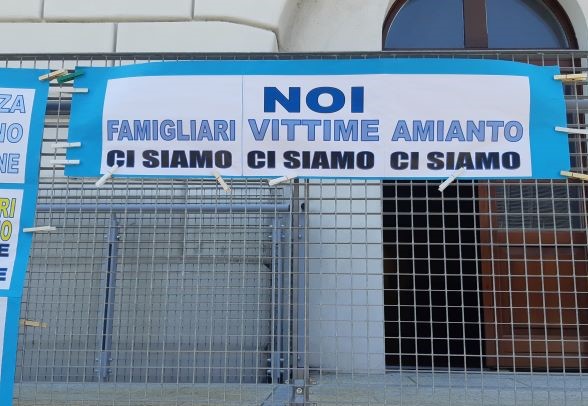
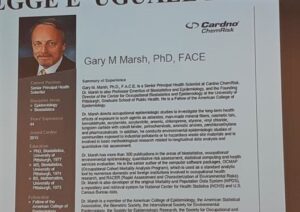
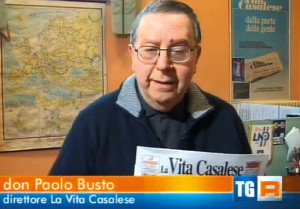
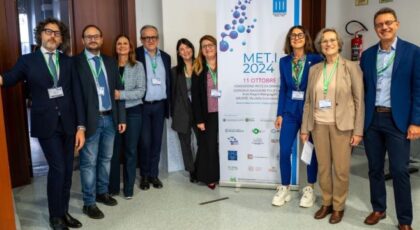
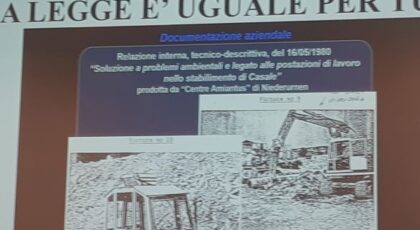
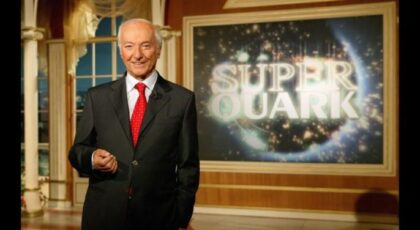
Terrificante soggetto. Speriamo non vada a finire che la comunità casalese debba pagare i danni all’Eternit per uso improprio dei materiali da lei prodotti.
Sempre più complicato e tecnico . Grazie per prezioso aggiornamento cara Silvana. Attendiamo fiduciosi nel ricordo dei nostri cari defunti . Paolo
Si riuscirà mai ad arrivare alla giusta condanna. Dobbiamo crederci. Grazie Silvana per il resoconto dettagliato.
Grazie Silvana! Come sempre ottima sintesi, richiamando gli argomenti più significativi. Stavolta il controesame ella Procura ha ben evidenziato le contraddizioni del prof americano nei metodi di valutazione delle questioni di fondo- PRIMA ESPOSIZIONE e il resto è acqua fresca e lo STABILIMENTO quale fonte di riscio ININFLUENTE rispetto alla presenza di materiali contenenti amianto nel territorio- , non solo : da parte del Proc. Colace e dell’avv. Laura damico (parti civili) hanno messo in luce efficacemenye l’attività del prof. la quale introduce interessanti elementi che aiutano la discussione sui dubbiosi, inesistenti o certi conflitti d’interesse….
PS: Molto, ma molto strana la motivazione e i tempi di riscontro( ieri stesso udienza Torino) della motivazione stessa, cioè la “chiavetta” fallata! , causa del rinvio al 30 novembre della sentenza d’appello Eternit Cavagnolo .